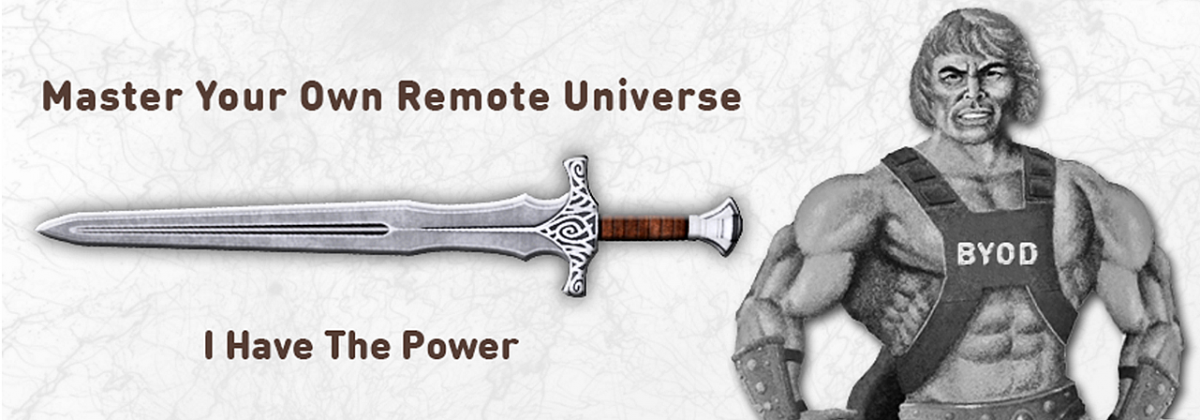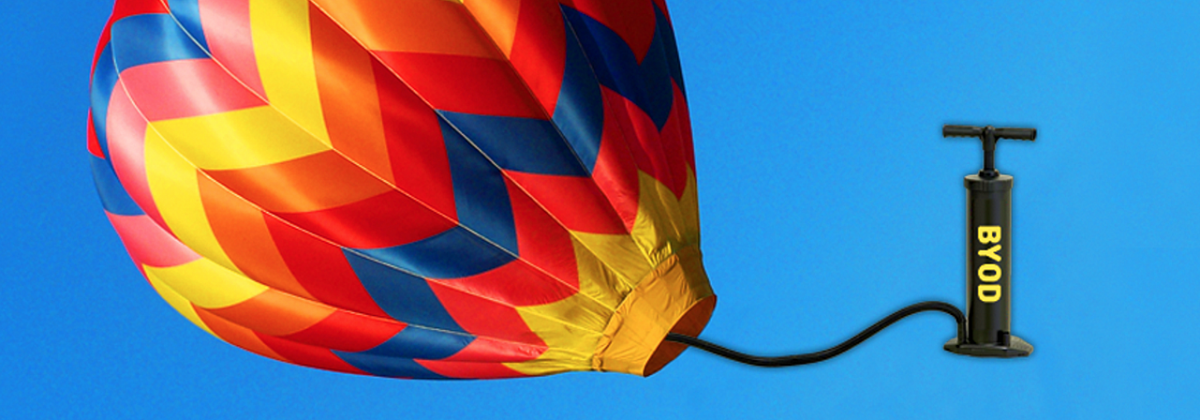Depending on whom you ask, BYOD’s effect on your work-life balance can either give you the freedom to fly like an eagle or turn you into a sad and overworked corporate zombie. As with any change in life, BYOD culture receives its fair share of praise and prejudice. But the strategy behind BYOD, including being able to work remotely, effectively gives you more control of your time than ever before.
A knee-jerk reaction may lead many to believe that BYOD is a mandatory and unavoidable gateway drug to workaholism. After all, your manager, colleagues and clients are just a push notification away from you anytime, anywhere. But while increased productivity is a definite corporate benefit of BYOD, overworking employees is not the intended means to achieving this goal for most organizations.
In fact, a prominent report by advisory company Corporate Executive Board (CEB) reveals that businesses which effectively address and manage work-life balance issues with their workforce can actually increase employee productivity by 21%. Another recent study by the Society for Human Resource Management (SHRM) shows that 89% of HR professionals noticed an increase in employee retention as a result of implementing work-life balance initiatives such as flexible work arrangements, one of which is working remotely.
You now have the option to unchain your mind and body from your office PC by taking your office mobile. Whether you’re a new parent, lover of the outdoors, or a creative spirit in search of inspiration, this new and flexible arrangement can greatly enrich both your personal life and your career. But with freedom comes responsibility, and you want to structure this new world in a way that is transparent to you and your organization.
So how do you harness working remotely to refresh your mind and body and feel more engaged and productive with your work?
1. Be your own manager
Ideally, a corporate BYOD program that lets you work remotely puts you in the driver’s seat by giving you freedom and flexibility to manage yourself. Just like in the office, it’s important to plan your workday in a way that meets or exceeds your employer’s performance metrics.
Document a plan which segments specific tasks and projects and allocates time to reach milestones and meet key deadlines. Make sure you build into this schedule some extra time which may be needed during the day, whether it’s picking up your kids from work, taking the dog out for a walk or popping into the gym for a yoga session. Having the foresight to plan ahead will give you a schedule that delivers on your accountabilities and lets you enjoy your freedom at the same time.
Once you’ve got it on paper don’t keep it to yourself. Communicate this plan to your employer so that they can rest easy knowing you have a blueprint to produce the quality and quantity of work they expect. Being proactive about this will demonstrate your professionalism and gain your manager’s trust.
2. Give yourself and your remote workplace a change of scenery
If you’re no longer obligated to stay shackled to the office, why limit your options by staying home all day? Take advantage of your new-found freedom and change-up your surroundings from time-to-time. Instead of working at home, set up shop in places that you find fun, fascinating and stimulating. Why not take your mobile workspace to your favorite park and literally smell the roses or hear the chirping of the birds? Grab a patio seat in that delightful beachside cafe while you soak in the sun and take in the relaxing, stress-relieving effects of the waves.
Variety isn’t just the spice of life, it is a proven way to alleviate stress, restore your attention span and get your creative juices flowing. This will help you get in the zone and produce quality work when you turn your eyes back to your screen.
3. Integrate exercise into your workday
While many organizations have invested in costly amenities for their staff such as on-site gyms and health-care services, the CEB study shows that less than 20% of employees actually use these benefits. There’s a variety of reasons for employees not taking advantage of these services, ranging from being less comfortable using shared gym facilities to a perceived lack of time for exercise along with having lunch or running other personal errands. Nevertheless, this doesn’t change the fact that forward-thinking organizations strongly espouse giving employees the flexibility and time to lead a healthy lifestyle, knowing that this positively impacts work performance.
Being active brings out the best in you physically and mentally, and when you turn your attention back to work, you’ll find it makes you attentive and efficient. So have your exercise gear with you and sprinkle physical activities into your calendar that are proven to re-energize, de-stress, boost your mood and confidence and increase your concentration. Hop on a bike, get in that run, do the downward dog or dance up a storm to your favorite Zumba class, because a healthier and more satisfied you will transfer creativity and confidence into your projects as well.
Blending your personal passions within a structured framework will let you master the significant benefits of working remotely and produce the work-life balance that will give both you and your organization a reason to smile.












